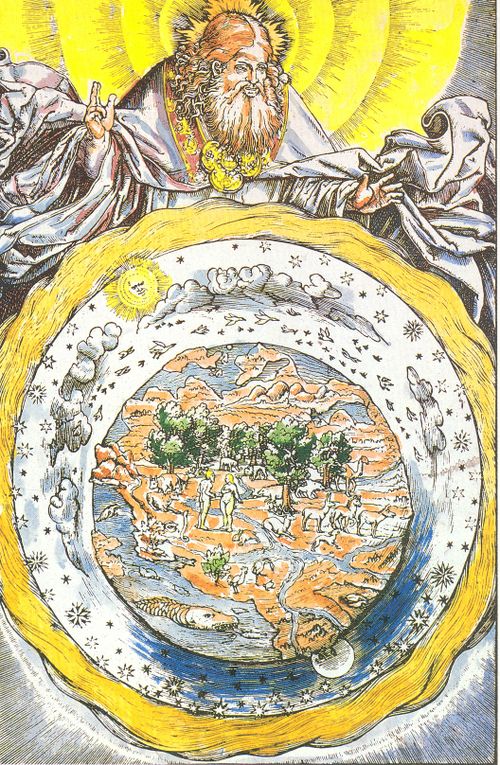The idea of the Earth as a sphere is an ancient one, proved over and over
again across the centuries, most famously proved by Aristarchus with a stick
and a hole and a shadow. The idea of the Earth as perfect, as a perfect sphere,
is an old belief wrapped in layers of hopeful scientific thought, God’s
creation and the cradle of mankind necessarily being perfect (Summa aside). This was a rigidly enforced perception and a
religious assumption, just like the belief that the Earth was the center of this
universe, and that a vacuum was a theological and therefore physical
impossibility. (See my post On the Discovery of Nothing.)
The
woodcut illustrated here—a depiction of a robbed and medaled God lording over
his creation—is interesting in its depiction of what seems to be a not-perfect
sphere of the Earth. The planet is definitely not smooth around its perimeter,
and the inclusion of three-dimensional mountain rendering accentuates this
depiction, which to me seems all very novel.
The source for this image is given as a “Martin Luther Bible of 1543”,
but that is wrong, unfortunately, which makes it less of a story.
If this woodcut was really done in 1543 it would’ve occurred in the same
year as two monumental publications:
Nicolas Copernicus’ De revolutionibus orbium coelestium and Andreas Vesalius’
De humani corporis fabrica (On
the Fabric of the Human Body),
marking what is the birth of modern science. (The print appeared in Luther's translation of the Bible in 1534.)
But offhand I don't see Luther's "Bible" for this year, and in general 1543 is not a good year in general for Luther so far as I’m concerned. He busily published Von den Juden und ihren Lügen (On the Jews and Their Lies ) and Vom Schem Hamphoras und vom Geschlecht Christi (On the Holy Name and the Lineage of Christ), both of which were horrible anti-Semitic attacks, and worse. For example, from the first work, he wrote that the Jews were a "base, whoring people, that is, no people of God, and their boast of lineage, circumcision, and law must be accounted as filth.", and in the second wrote that it was not an immoral act for not killing Jews. This really has nothing to do with the point of this post, but I just couldn’t let the reference to 1543 slide by without mentioning this very ugly tragedy of Luther’s theology.




Comments